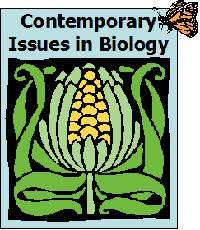
Week 11, Chapter 8 -- Digging Deeper
Course home | Weekly schedule | Announcements | Instructor Info | Desire2Learn | MasteringBiology® | Honor Code | FAQs | HELP!
 |
Week 11, Chapter 8 -- Digging DeeperCourse home | Weekly schedule | Announcements | Instructor Info | Desire2Learn | MasteringBiology® | Honor Code | FAQs | HELP! |
In this assignment, you will explore sex-linked traits and their effects on human phenotypes. You will also learn a little bit about the relationship between genes, proteins, and mutations. Some of this stuff can get pretty confusing and technical, so remember to ask your instructor if you need help!
Part 1:
Go to the Online Mendelian Inheritance in Man (OMIM) website. At the top of the site, you will see a search option. Click on "Advanced," then from the "All Fields" drop-down click "Chromosome" in both search fields and "Or" for the search function. Then search for "X" or "Y" to see x-linked and y-linked traits. Browse through the traits and pick one that begins with the first letter of your first name (either the medical name or common name of the trait is fine). Beware, however, that some of the common names of the traits do not show up until you actually click on the link to that trait. For example, CHONDRODYSPLASIA PUNCTATA 2 is also known as Happle Syndrome, but you don’t know that until you click on the link for Chondrodysplasia Punctata 2. In other words, if your name is Chris or Harry, you could use this trait for your assignment. If you can’t find a trait that begins with the same letter as your first name, then move to the second letter of your first name, and so on, until you find one that works. With so many traits from which to choose, you shouldn’t have too much trouble finding one that works for you!
Once you have chosen your trait, do a general internet search on its medical and common names. OMIM has some pretty technical terminology in it; unless you are unusually good at deciphering that type of language, you will want to find some other sources that will help you learn more about your trait.
Part 2:
Now, pretend your local elementary school is doing a unit on genetics and wants to create displays for a variety of sex-linked disorders. You've volunteered to help, so you're going to use the OMIM site plus your other sources to write a report that can be posted at the exhibit. In your report, you must explain all of your information in a way that a 10-year-old can understand. Your report should be between 450 and 550 words and address the following points.
List all references you used to write your report, using the correct format for citations.
* NOTE: Because of the technical language involved, this assignment may tempt you to “cut and paste” from the OMIM or other websites. Remember, that is plagiarism and an example of academic misconduct! You must learn to paraphrase, which means writing the ideas in your own words. If you need help with that, visit OU's Academic Integrity website.
You can view a sample assignment here.
Part 3:
Post your spell-checked, proofread assignments on the D2L discussion board.
Part 4:
Respond to at least two other students’ assignments. (If you are the first or second person to post, you will have to check back later to complete this part of the assignment). Your response should address whether you found the disease mechanism easy to understand from the author's description.
After you have posted your assignment AND responded to two other students, go to Desire2Learn and complete the Gradebook Declaration for this week's Digging Deeper assignment. (Your Gradebook Declaration is subject to the Honor Code.)
Here is the text of the Desire2Learn Gradebook Declaration: (8 points) I have posted my spell-checked, proofread Digging Deeper assignment at D2L. My assignment contains all the components listed in the assignment instructions. |